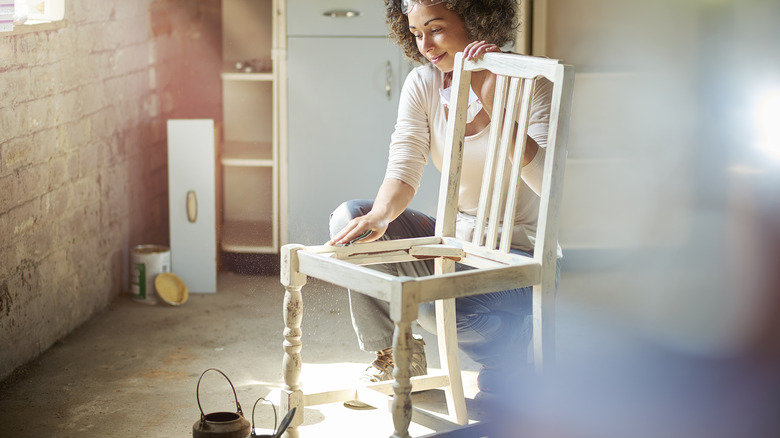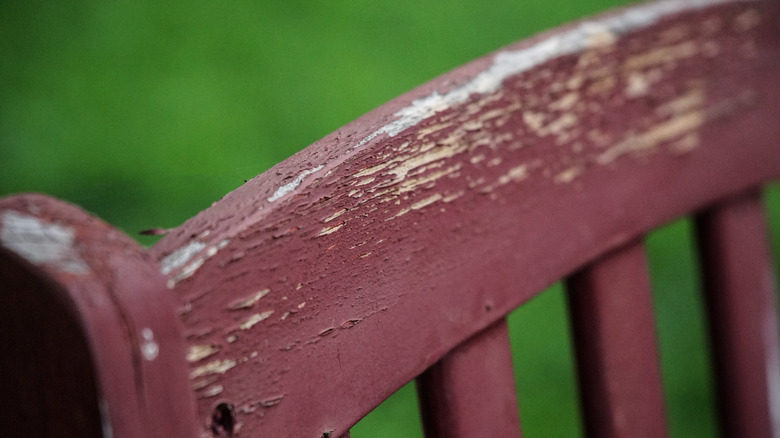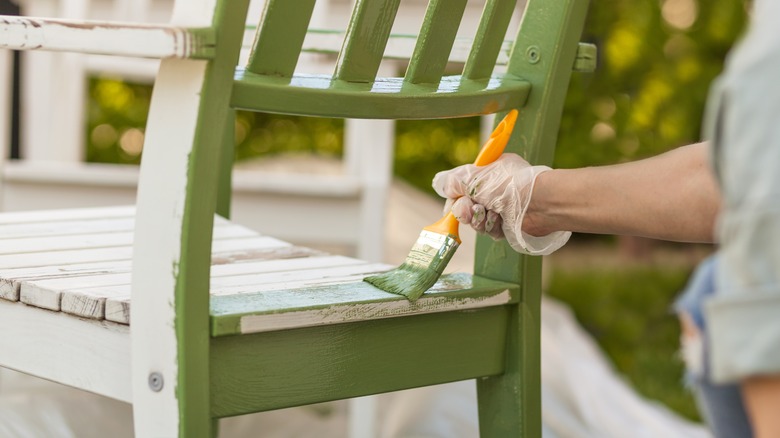When Do You Need To Sand Furniture Before Painting It?
When refurbishing a piece of furniture, the most important steps take place in the preparation stage. If you start with a poor base, your project will show that you cut some important corners. The first thing to do when flipping furniture is to wipe it down with a warm, damp rag. Clean the item from top to bottom to get rid of dust, grease, and debris. Failing to do so can cause the paint to improperly adhere to the surface, leading to flaking or peeling as it dries. While cleaning your furniture, check for any existing cracks or peeling paint that requires sanding.
Before moving on, make sure you have a clear vision of how you want the piece to look when finished. A distressed wooden dresser merits a different approach than a smooth, modern one. Sanding is often necessary to remove old stains, prevent paint discoloration, and keep your furniture in good shape. However, there are some exceptions.
Do I need to sand before painting?
As a general rule, any furniture item that has a flaky, chipped, stained, or shiny finish will need some sanding in preparation for a new coat of paint. Even if you are going for an aged look, painting over larger existing blemishes can cause you more problems in the future. Lightly sanding all of the areas you plan to repaint will create a rough surface for the new coats to stick to, which will help your paint job last longer.
Once you know that you'll be sanding your furniture piece, it's time to figure out how you should go about the process. Usually, 150 or 220-grit sandpaper is best for getting a smooth finish as you work in the direction of the wood grain. For smaller items, sanding by hand will allow you to get into the cracks and crevices with ease. However, large and flat pieces such as tables, dressers, and desks can be sanded with an electric sander, which will get the job done much more quickly.
For most projects, you won't need to sand all of the stain off your furniture. As long as you aren't trying to paint the wood with a lighter color than before, you can simply rough up the surface of your furniture until it's no longer shiny. Then, you can move on to filling nail holes, priming, and painting.
When can you skip sanding?
While sanding is often a necessary step when preparing old furniture for a new coat of paint, it can sometimes be skipped if the piece is in good shape. Newer items or those that have been well-cared for may only require a primer to help the paint adhere, especially if you desire an old-looking, distressed finish. In fact, omitting the sanding step when creating a weathered wood paint job may help highlight areas that would naturally show some age.
However, skipping the sanding process may also result in new scratches and dings on the paint job. Therefore, furniture that will be used daily for eating, working, or sitting should not be painted over without sanding first. If you don't have the time or willpower to sand, you can try forgoing this step for decorative pieces like bookshelves, bar cabinets, or side tables that you don't interact with regularly.


